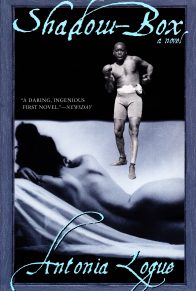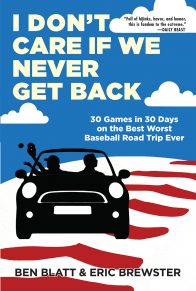THE GOLFER IS ALWAYS IRRATIONAL about the place in which he first falls in love. Ask anyone. For me, it was at the public golf course in Bellport, New York, one town east of Patchogue, the Long Island village where I grew up. Bellport is sixty-five miles east of Manhattan, and its municipal course is flat and short. Nothing famous has ever happened there. Fred Couples played it once, shot an even par 71, and people talked about that for years. During a hot, dry summer, it gets baked along the edges. But it’s my home course. It’s home. After you’ve been at the game for some years, you play better courses than your first course, courses that are more famous and challenging. But nothing is like the place where you first break 100 and the place where you first get the bug. The Bellport course at night is pleasing, too, but I can’t go into that, except to say this: One hole fronts Bellport Bay–a nice spot.
I found my way to the Bellport course, by bus, in the summer after I turned fourteen, in 1974. I knew nothing about golf–mornings then began with baseball box scores and Red Smith–until a gym teacher named Mr. Greenlee instructed us in the art of hitting plastic golf balls off plastic mats in his gym in our eighth-grade winter. Why I got hooked I do not know. My guess is that the predisposition for golf is in your DNA. Or maybe it comes from the same place that religious zealotry does. You know, some need. However it happened, it happened. My parents, who fled Nazi Germany as children, knew nothing about the game, but they helped sustain my early interest. My mother found mismatched clubs at the Salvation Army on Main Street in Patchogue and sewed little golf-bag emblems on my shirts. A few years later, my father pointed me to Herbert Warren Wind’s golf reports in The New Yorker. Just the idea of Herbert Warren Wind was too much for me. Hanging around golf and writing about it? Please.
Golf at Bellport was affordable. In ninth grade, I got a junior membership, which cost fifty dollars and allowed you to play Monday through Thursday after 2:30 p.m., except on Wednesday, Doctors’ Day, when the starting time for Class F members was 3:30 p.m. For a middle-class family like mine, fifty dollars was reasonable. My dentist’s wife, Mrs. Libin, lent me her matched clubs, with pink grips and blue-painted woods, and gave me stacks of Dr. Libin’s old Golf Digests. There were whole worlds in them.
I often played alone and sometimes with a friend or two. We found golf balls in the woods and in the creek that ran through the golf course and bought cold bottles of Yoo-Hoo for thirty-five cents at the halfway house, which was an actual house, with brown shingle walls, just beyond the eighth green. In summer, the halfway house was staffed by good-looking college girls, and there were always guys hanging around, too. As we walked to the ninth tee, perspiring Yoo-Hoos in hand, we were sure that fantastic and unknowable fleshy acts were going on beyond the brown walls.
I went to the golf course almost every day after school. I’d pedal down to Main Street with my golf bag on my back, lock my bike to a parking meter in front of the old Bee Hive (the only store in Patchogue with an escalator), and take a public bus to Bellport, also for thirty-five cents. The bus stopped directly in front of the golf course, on South Country Road. The only inconvenient thing about the bus was that the driver required a cover for my golf bag and I didn’t own one. One day the driver said to me, “If I come to a sudden stop and one of them clubs goes flying and somebody’s eye gets poked out, it’s not you that’s gonna get sued, it’s me.” In those days, in the mid-1970s, there was a lot of misinformed class resentment about golf and golfers. After that warning, I carried a brown paper shopping bag in my golf bag and put it over the clubs upside down when riding the bus. That satisfied the driver. Coming back, I’d often hitchhike and sometimes was picked up by Dr. Libin himself. I’d rest the clubs on the back seat of his Cadillac and cruise home in air-conditioned splendor.
I wanted to work in the game. There wasn’t much of an opportunity to caddie at Bellport, where most golfers used a pullcart, but one golfer who did use a caddie was the principal of my high school, Frank Juzwiak, and I carried his bag through my high school years. Mr. Juzwiak played first thing Sunday morning, and the men in his group were real golfers. They played quickly, no fussing around, and by the rules. They gambled, with just enough at stake that everyone became quiet and edgy late in the round with the outcome on the line. One of the regulars in the group, Sal ‘mags’ Maglio, was Bellport’s retired greenkeeper, and he talked simply and knowledgeably about how grass grows and where bunker rakes should be placed. (Always outside the bunker.) They discussed the Masters and the U.S. Open, although not the weekly tour stops, and Trevino and Nicklaus. They knew the culture of golf and the foibles of life. They spoke as men, and all you had to do to learn something was to shut up and listen. Mr. Juzwiak had me hold his pipe between shots. Sometimes, as he handed me the pipe, a string of saliva would stretch from his lower lip to the stem, break off, and come to rest on the stubble of his unshaven chin. This was not the Mr. Juzwiak I would see in school. I realized something: The game was a leveler.
Sometimes Mr. Juzwiak would ask me about our high school golf team and how our coach, John Sifaneck, was doing. Sifaneck, a math teacher and also the Patchogue-Medford High School bowling coach, was the first adult to treat me as a grown-up. He had caddied his way through high school and college, and his caddieyard stories had a lot to do with me wanting to become a looper, too. He had a crooked nose, a short backswing, and a playful manner. He was an expert on gambling–he was a hustler. We played regularly during my college summers. He loved golf. He lived in a windbreaker.
One day in 1985 he got a bad call from his doctor. He was a lifelong diabetic and now was being told he’d need to have a leg amputated. A surgery was scheduled.
Some days later, he was playing golf at Bellport and he reached the sixth hole, nearly two hundred yards from the back of the tee, with willows and beach grass running down the right side of the hole and a green shaped like a boomerang. He knew his golfing life, as he knew it, was coming to an end. With the flagstick in the back right corner of the green and a five-wood in his hands and the breeze in his face, Sifaneck made a hole in one, the first of his life.
And then he was in the hospital, where a doctor told him that he’d have to lose not one leg but both. As he was being wheeled on a gurney to the operating table, Sifaneck had a massive heart attack and died. I had a hard time imagining Sifaneck without legs, without golf. His ashes were dispersed one blowy day on Bellport’s sixth green, with his family and his golf friends gathered around.













